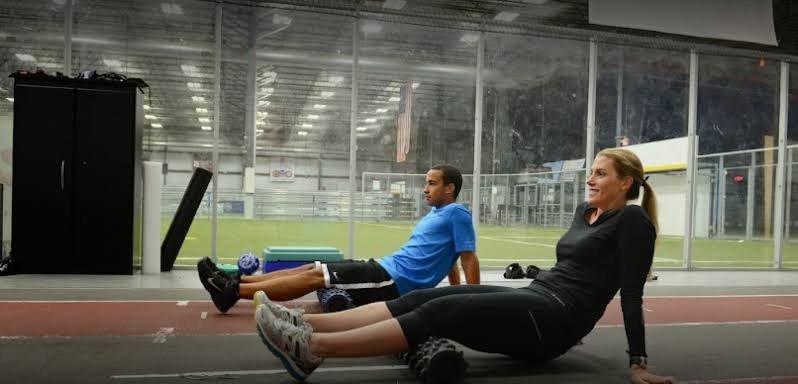Physical therapy is an essential healthcare discipline designed to aid individuals in recovering from injuries, managing chronic conditions, and enhancing overall physical function. This guide explores the various facets of physical therapy, its benefits, and its crucial role in improving quality of life for many people.
What is Physical Therapy
Physical therapy is a branch of rehabilitative health that employs specially designed exercises and equipment to help patients regain or improve their physical abilities. Often recommended for those recovering from surgery, dealing with chronic pain, or facing mobility issues due to aging or illness, the primary aim of physical therapy is to alleviate pain, enhance functionality, and boost overall quality of life.
The Role of Physical Therapists
Physical therapists are licensed healthcare professionals trained to diagnose physical abnormalities, restore physical function and mobility, maintain physical function, and promote physical activity and proper function. They work with patients of all ages, addressing a variety of conditions including musculoskeletal issues, neurological disorders, and cardiovascular problems. Physical therapists create personalized treatment plans tailored to each patient’s specific needs and goals.
Benefits of Physical Therap
The benefits of physical therapy are extensive and can significantly impact a patient’s life. Among these benefits are pain management, improved mobility, and avoiding surgery. Physical therapy is vital for recovering from injury or surgery and managing chronic conditions. It also helps in preventing future injuries by educating patients on proper body mechanics and movement patterns.
Types of Physical Therapy
There are several types of physical therapy, each focusing on different aspects of patient care. These include orthopedic physical therapy, which addresses musculoskeletal injuries, and neurological physical therapy, which focuses on conditions affecting the nervous system. Cardiovascular and pulmonary physical therapy aim to improve endurance and functional independence in patients with heart and lung conditions. Pediatric physical therapy specializes in treating infants, children, and adolescents, while geriatric physical therapy addresses the unique needs of older adults. Sports physical therapy targets athletes, helping them recover from sports-related injuries and improve performance.
Common Techniques Used in Physical Therapy
Physical therapists employ a variety of techniques to achieve treatment goals. Common techniques include manual therapy, therapeutic exercise, and modalities such as heat, cold, ultrasound, and electrical stimulation. Education on proper posture and body mechanics is also a crucial component, as is functional training designed to improve the ability to perform daily tasks and activities.
Conditions Treated with Physical Therapy
Physical therapy can address a wide range of conditions. Back and neck pain, often caused by poor posture, injuries, and degenerative conditions, are common issues. Joint pain and arthritis, involving inflammation and pain in the joints, affect mobility and function. Sports injuries, including sprains, strains, fractures, and overuse injuries, benefit significantly from physical therapy. Post-surgical rehabilitation helps patients recover and regain strength after surgical procedures. Neurological conditions such as stroke, spinal cord injuries, and traumatic brain injuries, as well as chronic pain conditions like fibromyalgia and chronic fatigue syndrome, are also effectively managed with physical therapy.
The Process of Physical Therapy
The physical therapy process typically involves several steps. An initial evaluation includes a thorough assessment and medical history review. Based on this, the therapist diagnoses the condition and determines the appropriate treatment course. A personalized treatment plan is developed, outlining specific interventions and goals for the patient. The therapist then guides the patient through the treatment plan, using various techniques and exercises to achieve desired outcomes. Regular reassessments monitor progress and adjust the treatment plan as needed. Once treatment goals are met, the patient is discharged with instructions for maintaining progress and preventing future issues.
Physical Therapy and Pain Management
One of the primary goals of physical therapy is to manage and alleviate pain. Physical therapists use various techniques, including manual therapy, exercise, and modalities like heat, cold, ultrasound, and electrical stimulation, to address pain. Educating patients on proper body mechanics and posture is also crucial in reducing strain and preventing pain.
The Importance of Patient Education in Physical Therapy
Patient education is a critical component of physical therapy. By educating patients about their conditions, treatment plans, and self-management strategies, physical therapists empower them to take an active role in their recovery. Proper posture, body mechanics, and exercises to perform at home are essential aspects of this education, helping patients understand their condition, adhere to their treatment plan, and prevent future injuries.
Physical Therapy for Chronic Conditions
Physical therapy is highly effective in managing chronic conditions. For example, physical therapy helps manage arthritis by reducing pain, improving joint function, and increasing strength and flexibility. For diabetes, exercise programs designed by physical therapists help control blood sugar levels and prevent complications. Cardiovascular physical therapy improves cardiovascular health, endurance, and overall physical function for heart disease patients. Techniques like manual therapy, exercise, and modalities are essential in managing chronic pain conditions like fibromyalgia and chronic fatigue syndrome.
Sports Physical Therapy
Athletes and active individuals benefit significantly from sports physical therapy. This specialized form of physical therapy focuses on injury prevention, educating athletes on proper techniques and body mechanics. It also aids in rehabilitation, helping athletes recover from injuries and regain performance levels. Performance enhancement is another critical aspect, with exercise programs designed to improve strength, flexibility, and endurance.
Pediatric Physical Therapy
Pediatric physical therapy addresses the unique needs of infants, children, and adolescents. Conditions commonly treated include developmental delays, helping children achieve developmental milestones through targeted exercises and activities. Physical therapy improves mobility, strength, and function in children with cerebral palsy and enhances muscle strength and function in children with muscular dystrophy.
Geriatric Physical Therapy
As people age, they may experience various physical challenges. Geriatric physical therapy focuses on helping older adults maintain or improve their mobility and independence. It addresses balance problems to reduce the risk of falls and injuries and strengthens bones and muscles to prevent fractures and improve overall function in osteoporosis patients.
Neurological Physical Therapy
Neurological physical therapy addresses conditions affecting the nervous system. It helps patients regain strength, coordination, and function after a stroke. Managing symptoms and improving mobility in patients with multiple sclerosis is another focus. Enhancing movement and function in patients with Parkinson’s disease is also a critical aspect of neurological physical therapy.
Cardiovascular and Pulmonary Physical Therapy
Patients with heart and lung conditions benefit from cardiovascular and pulmonary physical therapy. This therapy focuses on improving cardiovascular and pulmonary endurance through targeted exercises. Enhancing functional independence helps patients perform daily activities more efficiently and independently.
The Future of Physical Therap
The field of physical therapy continues to evolve with advancements in technology and research. Emerging trends include telehealth, which provides remote physical therapy services through video consultations and online platforms. Wearable technology monitors and enhances patient progress and adherence to treatment plans. Incorporating robotics and artificial intelligence assists in rehabilitation and improves patient outcomes.
Final thoughts
Physical therapy is a vital healthcare discipline that helps individuals recover from injuries, manage chronic conditions, and improve overall physical function. By understanding the various aspects of physical therapy, its benefits, and the different types of treatment available, patients can make informed decisions about their care and take an active role in their recovery. Whether it’s managing pain, improving mobility, or enhancing athletic performance, physical therapy plays a crucial role in promoting health and well-being.



